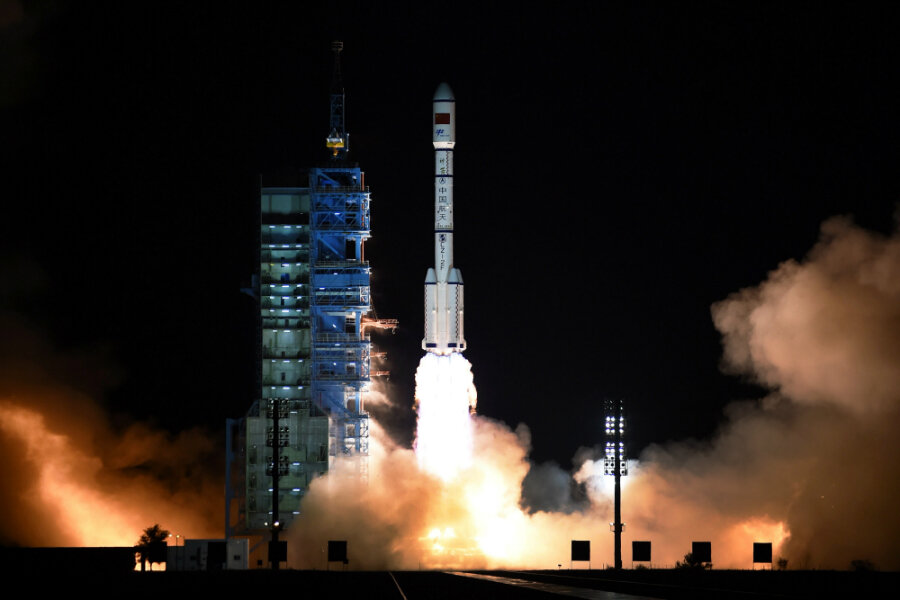China's plan to take 20 'bosses' and 'businessmen' to space on a plane
Loading...
China has dreams of space tourism.
The state-backed China Academy of Launch Vehicle Technology announced at the International Astronautical Conference in Guadalajara, Mexico, last week that it is developing a spaceplane that it said will be able to carry up to 20 passengers to the edge of space. Its competitors, Virgin Galactic and Blue Origin, plan to carry only six passengers at a time beyond the atmosphere.
While the project has intrigued space travel experts, they question whether China can successfully design a spaceplane that launches vertically and touches down on a runway. Nevertheless, the project shows China's interest in becoming a space power not just in science and exploration, but also tourism.
"More and more common persons are interested in the experience of space flight," the team designing the planes wrote in the paper they presented at the conference in Mexico. The project is "very attractive" to "bosses and businessmen," they wrote.
The team has started to design two versions of a plane that it hopes will be able to take off vertically from a launch pad and land horizontally on a runway. The smaller version is a 10-metric-ton plane that would be able to carry five passengers to an attitude of 62 miles, where space officially begins. The plane would reach speeds up to Mach 6, giving passengers two minutes of weightlessness, according to New Scientist.
The larger version is a 100-metric-ton plane that will be able to carry 20 passengers to an altitude of 81 miles. The plane would reach speeds of Mach 8, giving passengers four minutes of weightlessness. The plane would also deliver into orbit small satellites that would sit on top of the vehicle, offsetting the price of a ticket to between $200,000 and $250,000.
Team leader Han Pengxin told New Scientist nearly all the ground tests are finished. He expects test flights to be completed "in the next two years," and payload launches to start in 2020. If these launches prove safe, the spaceplane will start to carry passengers.
The design is a deviation from other spaceplanes for tourism or space exploration, since reaching space is incredibly difficult, writes Popular Science's Kelsey Atherton. As the atmosphere thins, flight becomes difficult and then impossible.
The planes Virgin Galactic and Blue Origin, created by Amazon founder Jeff Bezos, would be carried close to space by larger planes. The rockets would launch from the underbelly of the planes. The Air Force's mysterious unmanned X-37B robot and the unmanned version of Sierra Nevada Corporation's Dream Chaser would be carried to space on top of rockets, jettisoning the booster stages as they clear gravity, according to Popular Science.
The Chinese design would carry its fuel internally. The smaller plane would lack booster rockets. The larger plane will use a single booster add-on.
Roger Launius of the National Air and Space Museum in Washington, D.C., told New Scientist the project is an "interesting initiative," but the paper the team presented in Mexico last week lacks important technical details. "It is always easier to draw illustrations and talk possibilities than to build and fly spacecraft," said Dr. Launius.
A delegate at the IAC, who asked to remain anonymous, said the Beijing team’s aims are not impossible.
"From an engineering standpoint, all the spaceflight operations the Chinese team suggest have been proven before," they said. "Whether they can do it safely, however, and make a viable suborbital business out if it, is another question."
But the project also represents Chinese efforts to become a space power. China recently launched its Tiangong-2 space station to help the country reach Mars. China also finished the world's largest radio telescope last month search for gravitational waves, detect radio emissions from stars and galaxies, and listen for signs of intelligent extraterrestrial life.
All of this has come with major investments, too. The telescope, for instance, cost $180 million to build over five years.
This report contains material from the Associated Press.







